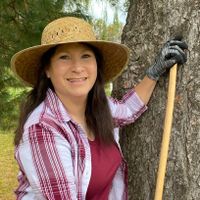Planting Seedbox Flowers: Learn How To Grow A Seedbox Plant


Marsh seedbox plants (Ludwigia alternfolia) are an interesting species native to the eastern half of the United States. They can be found alongside streams, lakes, and ponds as well as occasionally cropping up in ditches, seepage areas, and retention basins. As a native specimen, seedbox flowers can be used for naturalizing around backyard ponds and water features.
Seedbox Plant Info
Marsh seedbox plants are short lived, perennial members of the evening primrose family. In fact, they are also known as water primrose plants. Other names for the plant include floating seedbox and floating primrose willow.
They are hardy in USDA zones 4 through 8 and thrive in areas where ground moisture remains constant. Their notable characteristic is a cube shaped seed box which rattles when the seeds are ripe. These seed boxes are attractive additions in dried flower arrangements.
Identifying Marsh Seedbox Plants
Until they produce their characteristic seed capsule, seedbox flowers can be easily overlooked in the wild. Here are some features which can help you identify this species:
- Height: The reddish brown stems can grow up to 4 feet (1 m.) tall and are multi-branched near the top of the plant.
- Leaves: The leaves resemble that of willow and are under 4 inches (10 cm.) long. They grow on short stems and are sparsely arranged along the tall main stem and upper branches.
- Flowers: Seedbox blooms between June and August with July being the norm. The delicate, buttercup-like flowers are short lived with the four yellow petals often dropping the same day as they appear. The flowers are produced on the upper, shortened part of the plant.
- Fruit: The seed capsules are cubical in shape with a pore on the top for release of the seeds. The capsules stay small, averaging ¼ inch (6 mm.) or less in size. Upon maturity the seedbox rattles.
How to Grow a Seedbox
Seedbox flowers are not widely available at brick and mortar nurseries but can be found online from specialty seed suppliers. Seed should be planted in full sun in areas where soil remains consistently moist. The ideal location to plant flowers is alongside ponds, water features, or marshes and bogs. There are no reported issues with disease or insects.
Seedbox plants will self-seed under optimal growing conditions. Gardeners wishing to harvest the seed heads for floral arrangements (or when collecting seeds for the following year) should harvest the heads before the seedboxes break open and the seeds scatter. Ducks and geese will occasionally consume the seeds.
Growing aquatic plants near water provides underwater habitats for many species of invertebrates. These small creatures provide food for fish, frogs, and reptiles. Not only are marsh seedbox plants an unusual specimen species, but they're also an environmentally friendly plant.
Sign up for the Gardening Know How newsletter today and receive a free copy of our e-book "How to Grow Delicious Tomatoes".

Laura Miller has been gardening all her life. Holding a degree in Biology, Nutrition, and Agriculture, Laura's area of expertise is vegetables, herbs, and all things edible. She lives in Ohio.